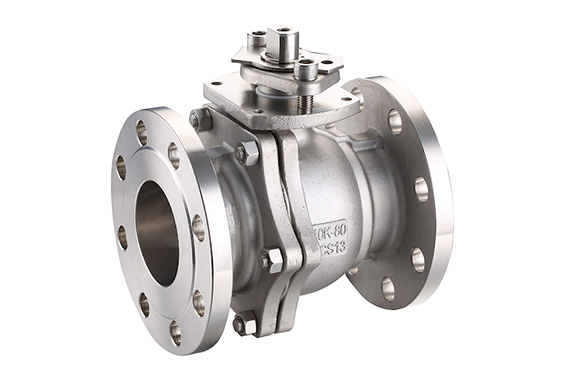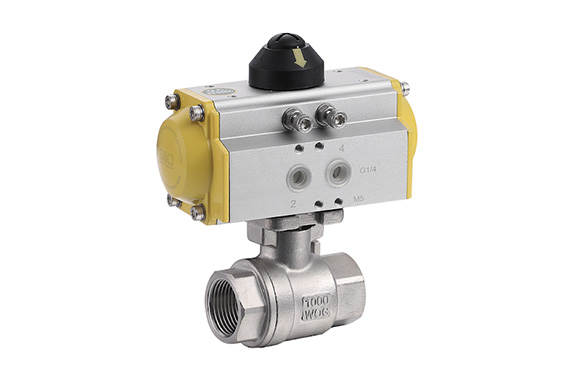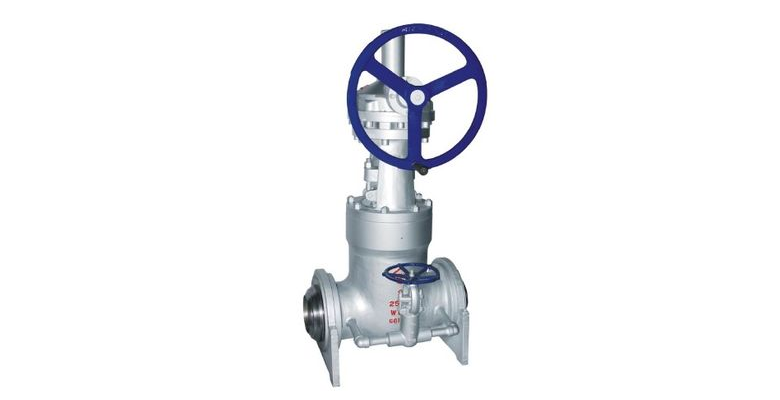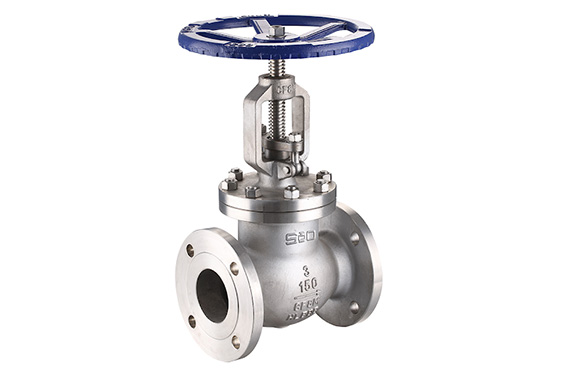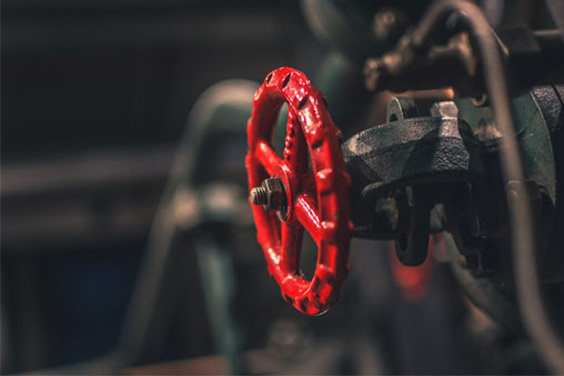
Source: Unsplash
Brass and bronze are frequently mistaken. They share a similar appearance, and sound similar in their names, and are employed in numerous related applications. Despite having many favorable properties in common, these materials are not the same. Bronze and brass valves differ in a number of ways, although not everyone is aware of them. While both substances are alloys with substantial amounts of copper, their costs and physical characteristics vary.
There are many types of ball valves on the market, each with its own unique set of benefits. When it comes to choosing the right ball valve for a need, it is important to understand the difference between brass and bronze ball valves. This guide will explain the key differences between these two types of valves so that one can make an informed decision about which type is right for a specific demand. In the end, one will know which type of valve is best suited for various applications.
What Is Bronze Valve
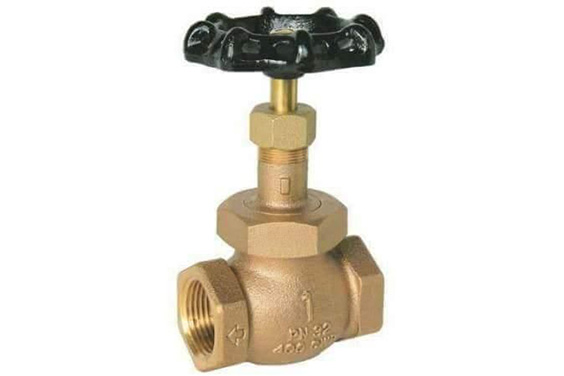
Source: Pinterest
Bronze is an alloy composed of copper and tin. It was first used around 3500 BC and it is thought to be one of the first alloys that were ever created. The reason why it is so important is that it doesn’t corrode as easily as other metals. This means that it can be used to create parts that will last a long time without needing to be replaced.
In many situations, bronze valves are an adequate substitute for their more common counterparts. Bronze offers several advantages over other valve materials, including improved sealing, resistance to corrosion, and lower weight.
Bronze valves are often used in water supplies, gas networks, and chemical plants. They offer superior sealing properties, resistance to corrosion, and low weight compared to other valve materials.
One of the most common uses for bronze valves is in water supplies. These valves are typically used in places where water flows through a number of different parts or surfaces. Bronze valves offer a number of advantages over other valve materials when it comes to sealing. Bronze valves are much less likely to leak than other valve types, and they also have a higher durometer rating which means they are more resistant to wear and tear.
Furthermore, bronze valves are also commonly used in gas networks and chemical plants. Gas networks use these valves to control the flow of gas throughout the network. Chemical plants use these valves to control the flow of chemicals into and out of the plant. Bronze valves offer superior sealing properties, resistance to corrosion, and low weight compared to other valve types. This makes them ideal for applications where high durability is required.
Overall, bronze is a very versatile material that is used for plenty of different things.
What Is Brass Valve
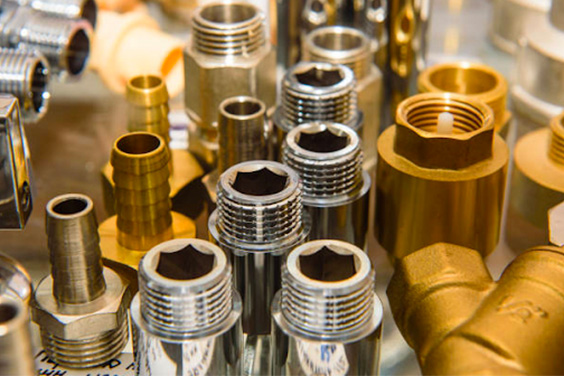
Source: Pexel
Brass is more recent than bronze, primarily because brass is made of a harder metal than bronze. It has been found in Spain and other parts of the world for over 2,000 years and was first recognized in 500 BC. Brass is a flexible and simple object which facilitates many different purposes.
One of the key advantages of brass valves is that they are very durable. It is often used for valves, as it is very strong and does not brake easily. They are also resistant to corrosion, making them ideal for use in many different environments. Brass valves can be used in both high-pressure and low-pressure applications, and they can be manufactured to tight tolerances. This means that they can provide a great deal of control over the flow of fluids through a system.
When it comes to materials that can stand up to high temperatures and corrosive materials, brass valves are an excellent choice. This is because brass is an alloy of copper and zinc, two materials that are known for their resistance to heat and corrosion.
Brass valves are often used in applications where there is a need for resistance to high temperatures or corrosion. For example, brass valves are commonly used in water heaters and boilers, as well as in chemical plants and refineries.
Bronze Valve Vs Brass Valve: Main Differences
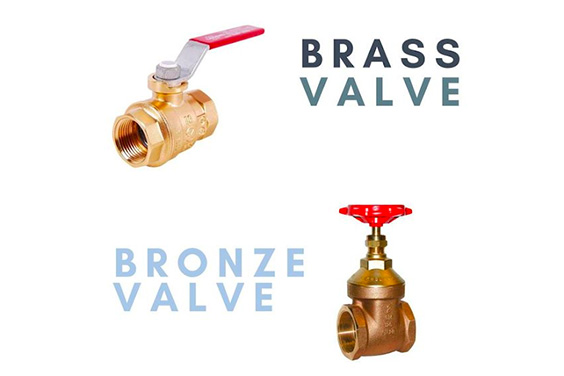
Source: Pinterest
When working in the plumbing industry or are a homeowner doing repairs, anyone will eventually come across the terms “bronze valve” and “brass valve.” While both types of valves are made of metal, there are actually some key differences between the two that everyone should be aware of. Here is a look at the main differences between bronze valves and brass valves to make the right decision for a need.
Manufacturing Technologies
A brass valve has a shorter life than a bronze valve because the bronze is corroded by the metal content of the water. Brass valves can also be easier to service because they have fewer small nicks and dents.
Here are the fundamental difference between bronze and brass valves in terms of production procedures is as follows:
Brass Valves
Brass components and parts are manufactured using casting the brass into shape, forging, preparing the brass for liquidation, and cold drawing. The most widely used type of brass valve is the gate valve. Gate valves are useful for controlling the flow of liquids and gases through a pipe. There is a great variety of sizes and designs for gate valves, making them perfect for use in many industries. Because of the improved compactness of the metallographic structure, forged components are in high demand, resulting in a lack of porosity, reduced size tolerance, and a smooth surface.
Bronze Valves
The production of bronze valves is to develop a mold. This can be done through casting or machining. Through this, a pattern must be created before casting the valve. The mold must be cured after it has been constructed.
Curing can be accomplished by either heating the mold or using a chemical hardener. As a result, the surface is rough and jagged. The quality of a forging element cannot be assured or maintained using the casting method.
The bronze alloy must be prepared once the mold has cured. Before being inserted in the mold, the alloy must first be melted. Once the alloy has cooled and set, the valve must be retrieved from the mold.
The valve’s completion is the final stage of production. Polishing and plating may be included.
Casting has several drawbacks, including shrinkage voids, porosity, liquation, and segregation. Because of the process’s variability, identifying and overcoming these flaws is especially difficult. The results are leaks, structural collapse, corrosion, and a jagged surface.
Heat Endurance
Brass and bronze valves withstand high temperatures. Brass melts at 1710 degrees Fahrenheit (930 degrees Celsius), whereas bronze melts at 1590 degrees Fahrenheit (930 degrees Celsius) (865 degrees Celsius). As a result, brass has slightly stronger thermal resistance than bronze. Brass operates well in hot conditions but poorly in cold temperatures.
Metal Mash
The amount of metal the valve combines with the medium is called metal mash. Lead content in brass ranges from 2% to 3%, while bronze contains at least 5%. Bronze disperses different metals in the media because it includes additional information.
As a result, brass valves are preferred in potable water applications. A few manufacturers who use lead-free products adhere to the Clean Water Act’s lead regulations.
Corrosion Resistance
There are numerous considerations when selecting a valve for a particular application. The corrosion resistance of the valve material is an essential consideration. In general, brass valves are resistant to corrosion.
Various alloys are utilized for valves and other applications where corrosion resistance is essential.
Even the most corrosion-resistant materials will eventually succumb to corrosion under the right conditions. Here are the distinctions between Brass and Bronze.
Brass
Several factors can influence brass valve corrosion resistance. First, because brass is an alloy of copper and zinc, it is more durable than metal alone. Second, brass has a more extensive zinc content than other metals, which aids in corrosion resistance. However, if the water contains a high concentration of chlorine, brass may get strained and corroded. The process of zinc leaching from brass alloys having more than 15% zinc in the presence of moisture and oxygen is known as dezincification.
Finally, brass is routinely polished, which reduces the buildup of dirt and other contaminants that can cause corrosion. Dezincification-resistant brass is chosen in this case. The material was created for use in pipe fittings and valves with potable water.
A specific surface protective coating can be used to prevent brass corrosion cracking. the material was designed for use in pipe fittings and valves with potable water. A particular surface protective coating can be used in order to avoid brass corrosion cracking.
Bronze
The advantage of bronze valves’ corrosion resistance is the capacity to reduce metal corrosion resistance by 1-2%. This is because this metal is already planarized and has few flaws.
Bronze’s resistance to dezincification corrosion is often remarkable. However, because of metallurgical flaws, it is prone to localized corrosion. Bronze has acceptable corrosion cracking tolerance, yet it never occurs.
Melting Point
The melting point is the temperature at which a solid substance transforms into a liquid. Bronze has a melting point of 1675 degrees Fahrenheit and 913 degrees Celsius. Brass, on the other hand, has a melting temperature of 1710 degrees Fahrenheit and 930 degrees Celsius.
Media And Uses
This is a crucial consideration when deciding between bronze and brass valves. For specific uses, both offer significant advantages and disadvantages.
Brass valves are essential components of many media, including plumbing, heating, and cooling systems. They can be employed in air and gas systems and water-based applications. Brass valves’ corrosion resistance and durability make them ideal for use with media prone to extreme wear and strain.
While Bronze valves, also known as check valves, are used in drinking water and gas supply systems to restrict fluid flow, they are also used to inject water and gas. This valve is used in both public and private water delivery systems. It has a cylindrical body, a short stem, and a flanged top disk. When pressure is applied to the disk, the stem opens, allowing fluid to flow through the valve.
Lead-free bronze valve, on the other hand, would be permitted. It has some connection to the plumbing industry and other industrial areas. Bronze valves thrive in maritime businesses because they are more resistant to corrosion in salty settings.
Machinability
Brass
Machinability of brass refers to the ease with which the metal can be worked into desired shapes. Brass is a relatively easy metal to machine, as it is malleable and ductile. These properties allow for the metal to be easily formed and manipulated into the desired shape. In addition, brass has a low melting point, which allows for easy cutting and machining of the metal.
The ease with which brass can be machined is one of the key reasons why the metal is so popular in a variety of applications. Brass can be found in everything from plumbing fixtures to musical instruments. The metal is also commonly used in decorative applications, due to its shiny, golden appearance.
Bronze
The corrosion resistance and strength of the bronze alloy of copper and tin make it a popular material. However, bronze is also known for being difficult to machine. When machining bronze, it is important to use high-speed steel (HSS) tools or carbide-tipped tools. The cutting speed should be slow, and the feed rate should be high. It is also important to use plenty of lubricant and coolant when machining bronze.
Hardness
There are many ways to measure hardness, but one standard method is the Brinell hardness test. Brinell hardness is a value proportional to the load or test force applied to a hard steel ball and the computed curved area of the indentation generated. The resulting dent is then measured and the Brinell hardness number is calculated.
The resulting dent is then measured, and the Brinell hardness number is calculated. Bronze and brass both have high Brinell hardness numbers.
For example, annealed brasses have a Brinell hardness of around 100, while bronzes can be as high as 210. This means that bronze is much harder than brass.
The difference in hardness between bronze and brass is due to the different metals that are used to make each alloy. Bronze typically contains metals like tin, copper, and zinc, while brass contains mainly copper and zinc. The different proportions of these metals result in different microstructures, and it is this microstructure that gives each alloy its unique properties.
Ductility
There are many factors that affect the ductility of a material, including chemical composition, microstructure, and heat treatment. However, in general, bronze is more ductile than brass. This is because bronze typically has a lower melting point and higher carbon content than brass. Additionally, bronze is less likely to undergo phase changes than brass, which makes it more ductile.
There are several examples of this difference in ductility between bronze and brass. For instance, bronze is often used in the manufacture of pipes and tubing because it is more ductile and can be easily formed into these shapes.
Brass, on the other hand, is not as easily formed into these shapes and is more likely to crack or break during the forming process. Additionally, bronze is often used in the construction of bridges and buildings because it can withstand large amounts of stress without breaking. Brass, on the other hand, is not as strong and is more likely to buckle or collapse under heavy loads.
Conductivity
The conductivity between bronze and brass is a result of the different compositions of the two materials. Bronze is an alloy of copper and tin, while brass is an alloy of copper and zinc. The different proportions of these metals result in different levels of conductivity between the two materials.
Various industries use conductivity brass valves to control the flow of fluids. These valves are highly conductive brass, making them ideal for applications requiring electrical current regulation. In addition to chemical and petrochemical firms, conductivity brass valves are commonly used in power plants and other industrial facilities.
Bronze conductivity valves are made with copper wires. The liquid oxygen and hydrogen gas attract the molten metal. The molten metal flows through the wire’s perforations and into the hole in the stem. The metal flows freely until it collides with an oxygen gas atom with the same electrical polarity as the metal. The valve can be opened by placing a metal object on one of the metal atoms, causing it to detach from the rest of the metal and activate. In general, bronze has a higher conductivity than brass, but the exact conductivity will vary depending on the specific composition of the alloy.
Color And Interface
There are a few main differences between bronze valves and brass valves in terms of color and interface. First, brass valves tend to be more yellow in color, while bronze valves have a reddish hue. Additionally, brass valves usually have a smoother surface finish than bronze valves.
When it comes to interface, the biggest difference between these two types of valves is that bronze valves are typically threaded, while brass valves are usually soldered. This means that brass valves are more likely to create a watertight seal, which is why they are often used in plumbing applications. However, soldered connections can be more difficult to create than threaded ones, so bronze valves may be preferable in some situations.
Composition
Bronze and brass are both alloys, which are a material made up of two or more metals. The main difference between the two is the proportions of the metals used in each.
For bronze valves, the common metal is made of copper, tin, and sometimes lead. This type of valve is well-known for its corrosion resistance, wear, and erosion. Composition bronze valves are commonly used in steam lines and other applications requiring high heat and pressure resistance.
The composition of bronze varies depending on the specific alloy but typically contains around 60-90% copper. Tin is the most common other metal used, and it is usually present in proportions of 10-40%. Other metals that may be present in smaller amounts include lead, nickel, iron, manganese, and silicon.
Brass valves are used in various applications that require strength and corrosion resistance. The addition of zinc to copper increases the metal’s strength and hardness, while the presence of copper provides the alloy with superior corrosion resistance.
Brass typically contains around 70-30% zinc, with copper making up the rest. However, the exact proportions can vary depending on the specific brass alloy. Lead is sometimes added in small amounts to improve machinability.
Durability
The Brass valve alloys are made up of copper and zinc. Brass is a reasonably pliable metal that may be cast or machined. In terms of performance and longevity, brass valves are preferred over bronze valves. Here are some advantages of brass valves.
- More corrosion-resistant than bronze.
- Lead levels are extremely low (to non-existent).
- Extremely long-lasting
- Malleable
There are also potential drawbacks of brass valves.
- The price point is higher.
- When exposed to high levels of chlorine, it can undergo a caustic dezincification process.
When it comes to the bronze valve, the majority of bronze valves have a porous surface, and some bronze alloys with appropriate additives can be polished. Bronze valves have a number of advantages. These include:
- Low priced (sometimes cheaper than brass valves)
- Very high ductility
- Corrosion-resistance
Bronze valves, on the other hand, have significant drawbacks. These are some examples:
- Casting causes high porosity, which can lead to gradual deterioration.
- Rough surface lead content
Comparing bronze valve vs brass valve, both are strong and long-lasting when it comes to durability. However, brass valves are slightly larger than bronze valves. Brass is a more durable, resistant, strong, and flexible metal than bronze. However, high quantities of chlorine and salt can corrode the brass. Therefore bronze is preferable in this case.
Cost
There is no definitive answer when it comes to the cost between bronze and brass, as both metals have their own unique perks and drawbacks. However, one factor to consider is the location of the manufacturing plant. In general, brass is more expensive than bronze because the metal is more difficult to work with and requires a greater amount of resources (such as copper) to produce.
Another factor to consider is the thickness of the metal. Brass is generally thicker than bronze, meaning that it can handle greater stress without breaking. This makes brass ideal for products that require greater durability, such as fittings and machinery.
Ultimately, the cost of bronze vs brass will depend on a variety of factors, such as the location of the manufacturing plant and the thickness of the metal.
Are Brass Valves Better Than Bronze Valves
In terms of performance and longevity, brass valves are widely regarded as superior to bronze valves. The disadvantages of bronze valves make brass valves ideal. Bronze has a rough and porous appearance, is prone to progressive degradation, and includes a high quantity of lead on occasion.
When exposed to high amounts of chlorine, brass valves are prone to corrosion. Aside from that, they are relatively corrosion-resistant. They have little to no lead in them. Furthermore, brass valves are exceptionally durable and malleable.
Despite its excellent corrosion resistance, brass’s zinc component can be damaged by large amounts of chlorine. As a result, brass is ideal for a wide range of media, including natural gas. Brass is a better choice for drinkable water than bronze since it has significantly less lead.
Choosing Brass or Bronze Control Valves
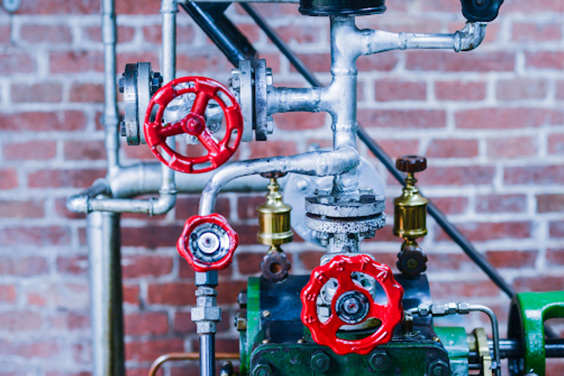
Source: Pexel
Because of their excellent corrosion resistance, brass valves, like bronze valves, are widely utilized in the petrochemical and maritime industries. Brass cutoff valves and ball valves are also frequently employed in the natural gas industry, where it has been demonstrated that they can tolerate fire exposure just as well as their more expensive stainless steel equivalents. Here are some guide bronze valves better than brass valves.
Choose brass valves if they will be used in the following applications:
- Natural gas shut-off
- Flow direction control
- Air and liquid shut-off
- Flow Control
- Potable water
Bronze valves are used extensively in high-performance applications and the petrochemical sector, particularly in marine environments where corrosion must be kept to a minimum. This is because bronze is resistant to oxidation and other forms of wear and tear.
In the following circumstances, bronze valves are the appropriate choice:
- Marine
- Flow Control
- Petrochemical
- Flow shut-off
- Flow direction control
- Safety relief
Conclusion
With the help of this comparison guide, it is clear that brass and bronze valves are used for various functions across numerous sectors. In terms of longevity and performance, brass valves outperform bronze valves.
This is why it’s necessary to contact an experienced industrial valve manufacturer. SIO provides a variety of long-lasting and high-quality valves. The company is a leading manufacturer and supplier of industrial valves in China. SIO focuses on delivering safety, efficiency, and cost-effectiveness to all automation-required industries with over a decade of experience developing high-quality industrial valves.
Another reason why it’s a good reason to collaborate with SIO is because of their background icon’s fast response for customization providing absolute quality and results.
When ordering valves from SIO, not only getting a high-quality product and a dedicated engineering team. They will track the progress of the client’s purchase order from start to finish.
We are dedicated to providing top-quality industrial valves and equipment to distributors, importers, and project managers worldwide
When acquiring a variety of long-lasting and high-quality valves, contact SIO, and they will help with any queries customers need.

